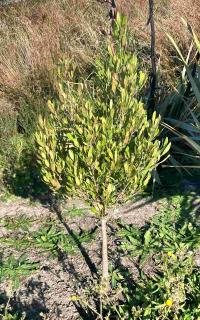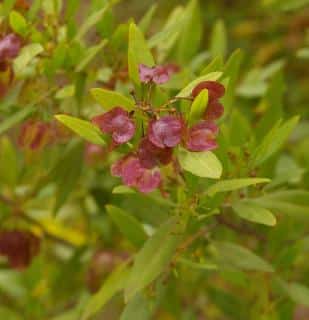

Dodonea viscosa key facts
Botanical name – Dodonea viscosa
Common name – broadleaf hopbush
Family – Sapindaceae
Type – Shrub
Bearing – bushy
Height – 10 to 13 feet (3 to 4 m)
Breadth – 5 to 6 feet (1.50 to 2 m)
Exposure – full sun
Soil – any type
Flowering: summer, but not very showy
Broadleaf hopbush or Dodonea in latin, are evergreen shrubs with longe, narrow leaves that are a bit similar to those of weeping willow. The blooming, which is almost invisible, is not what makes them appealing.
What does is in fact their capacity to grow in any type of soil and that they’re great for growing in coastal climates. They’re actually a common find along the seaside on both sides of the Atlantic and along the Mediterranean.
Broadleaf hopbush can be planted just as well directly in the ground and in containers. Ideally, planting should take place in fall for the plant to settle in faster.
The entire botanical genus for Dodonea accepts all types of soil. It does, however, require full sun exposure to truly thrive. Moreover, this isn’t a very hardy plant, it can’t survive temperatures lower than 28°F (-20°C). It’s not recommended to try to grow these in regions where winters are harsh.

Since it’s happy even with poor soil, there’s no need to add organic matter. However, if your soil is rather hydromorphic and retains water, it’s possible to increase drainage by adding sand and/or gravel.
Lastly, when the plant is in position, backfill the hole, taking particular care to not bury the root crown of the shrub (a lighter-colored portion of bark that’s a short distance from the first roots).
For growing in container, just spread a drainage layer along the bottom of the pot before adding your mix of soil, sand and soil mix. The type of material to use for drainage is your choice: gravel, clay balls, pozzolana, etc.
After that, place the root clump at the center of the container and backfill the hole, again taking care not to place the root crown too deep.
This plant won’t fill your schedule: dodoena doesn’t require much care. When planted in the ground, simply check that the shrub isn’t lacking water during the first summer after the planting.

If you wish to multiply your Dodonea specimen, proceed to prepare cuttings at the end of summer. Note that even the flowers aren’t very impressive, they do nonetheless produce surprising winged seeds which you can try to germinate.
A naturally resistant shrub, Dodonea isn’t vulnerable to diseases nor to pests.
In general, Dodonea copes well with repeated pruning, even hard pruning. They’re thus perfect to create a hedge. If you so wish, they’re also very ornamental in shrub beds and in large containers. Whatever your choice, there are a few plants that are nice when paired with broadleaf hopbush, you can take a look at Olearia traversii, Eleagnus x ebbingei, sea orache, arbutus unedo and also Photinia.
Finally, most available specimens of Dodonea come in either of two hues, for the leaves: copper green (D. viscosa) and purple (D. viscosa ‘Purpurea’).
You can select several cultivars to create an original mixed hedge!